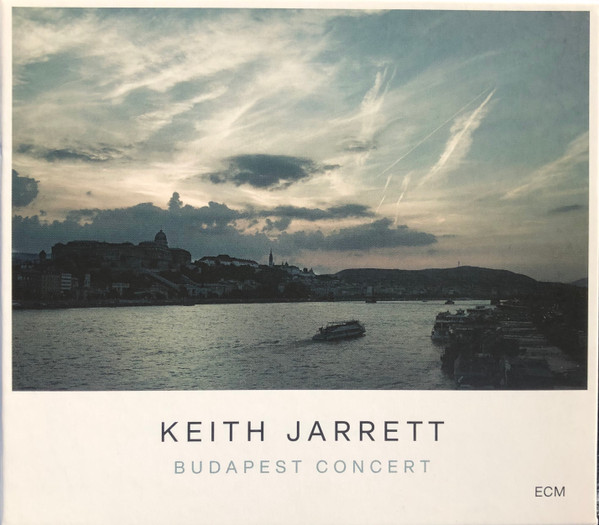
Budapest Concert (ECM)
Keith Jarrett
Released October 30, 2020
JAZZ FM 25 Best Jazz Albums of 2020
AllMusic Favorite Jazz Albums 2020
JazzTimes Top 20 New Jazz Releases of 2020
DownBeat Four-and-a-Half-Star Review
YouTube:
https://music.youtube.com/playlist?list=OLAK5uy_mO6OtAFwV3iRRKRTzPXDpmgXXG02jypes
Spotify:
About:
Budapest Concert is the second complete show to be issued from Keith Jarrett’s 2016 European tour, recorded two weeks earlier than the widely-acclaimed concert released as Munich 2016. The new double album documents the pianist’s solo performance at the Béla Bartók National Concert Hall in Budapest. Jarrett, whose family roots reach back to Hungary, viewed the concert as akin to a homecoming – also with regard to his lifelong affection for Bartók, as he explained to the audience – and the context inspired much creative improvisation.
Where Jarrett’s early solo concerts shaped a large arc of music over the course of an evening, his later performances, particularly since the Radiance album, have generated suite-like structures, comprised of independent “movements”, each of them a marvel of spontaneous resourcefulness. Reviewing Munich 2016 in London’s Financial Times, Mike Hobart suggested that “the early recitals mixed classical musings, populist references and jazz spontaneity into extended streams of invention, but later recitals separated the strands.” If the process of improvisation was once the subject of the concerts, it could be said that Jarrett’s 21st century solo concerts are less about seeking than finding. There is nothing tentative about the music making on display here: its sense of assurance is among its striking characteristics – whether a ballad, a polyrhythmic study, a tone poem or an essay on the blues is being shaped in the moment.
“His magnetism for the audience must come from his polygenre attitude,” wrote Gábor Bóta on Hungary’s Népsava news site. “Jarrett consumes all genres, from light to serious, and makes them his own. Since the entire performance is improvised, we witness the music being birthed right in front of us…One feels that he just sniffs the air, catches a moment’s feeling, clicks his fingers, squints his eyes and there we have it: the right notes, the right melodies, a completely unique performance.”
Creative energy is also applied to more familiar songs given as encores, and “It’s A Lonesome Old Town” and a particularly rhapsodic “Answer Me” are transformed in Budapest.
Lately, Keith Jarrett has been saying that he views Budapest Concert as his current “gold standard”, the reference work against which other solo recordings might be measured. Whether heard as a late high point in an unprecedented musical journey or enjoyed entirely on its own terms, it is a remarkable achievement.
Track Listing:
Disc 1
1. Part I 14:42
2. Part II 06:54
3. Part III 08:10
4. Part IV 07:35
Disc 2
1. Part V 05:13
2. Part VI 03:52
3. Part VII 05:45
4. Part VIII 05:35
5. Part IX 02:42
6. Part X 08:40
7. Part XI 05:54
8. Part XII: Blues 04:04
9. It’s a Lonesome Old Town (Charles Kisco / Harry Tobias) 08:01
10. Answer Me, My Love (Fred Rauch / Gerhard Winkler) 04:55
Personnel:
Keith Jarrett: piano
Recorded 2016, at the Béla Bartók Concert Hall, Budapest, Hungary
Producer: Keith Jarrett
Engineer: Martin Pearson
Cover Photo: Martin Hangen
Design: Sascha Kleis
Mastering: Christoph Stickel
Executive Producer: Manfred Eicher
Review:
In the summer of 2016, pianist Keith Jarrett set out on a solo tour, concertizing extemporaneously in some of Europe’s greatest performance halls. ECM, his label since the 1970s, was on hand to document the performances. Munich 2016, the first album from that cache of live recordings, dropped in September 2019. By the time of that release, Jarrett had suffered two paralyzing strokes, throwing into doubt the future of his pioneering, 50-year career.
The second release from that run, Budapest Concert, serves as a poignant companion to the first. Recorded at the Béla Bartók Concert Hall in Hungary almost two weeks before the Munich date, the album unveils Jarrett’s evolving musical conception for the tour. As on Munich, he opened with a long, impulsive free improvisation that eschewed melodic suppositions (“Part I”), followed by a more concordant section (“Part II”) and two spontaneous forays into increasingly complex rhythmic and harmonic expressiveness (“Part III” and “Part IV”). Throughout the first disc, one can hear Jarrett’s signature vocalizations—the seemingly unconscious exposition of the music he’s hearing in his head.
On the second disc, these vocalizations diminish as Jarrett falls into a stretch of gentle melodicism, expounding on a sonorous motif (“Part V”), a boisterous bop head (“Part VI”), a regret-filled ballad (“Part VII”) and a heart-searing meditation (“Part VIII”). “Part IX” and “Part X” signal a return to the dark, ponderous free expression that opened the concert, and “Part XI,” an unhurried waltz, tempers the frenzy of these two preceding tracks. For the finale in Budapest, Jarrett resolved the musical epic with a growling 16-bar blues (“Part XII), before closing with some oft-played encores, an almost unbearably tender farewell.
Suzzanne Lorge (DownBeat)





